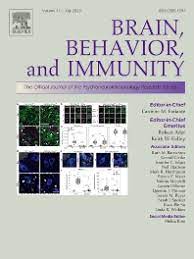
Identification of sick conspecifics allows for avoidance of infectious threats, and is therefore an important behavioral defense against diseases. Here, we investigated if humans can identify sick individuals solely from biological motion and posture (using point-light displays). Additionally, we sought to determine which movements and sickness parameters would predict such detection. We collected video clips and derived point-light displays (one stride presented in a loop) of sick walkers (injected with lipopolysaccharide at 2.0 ng/kg body weight) and the same walkers when healthy (injected with saline). We then presented these displays to two groups, one group classified each walker as sick or healthy (study 1, n = 106), and the other group scored the walkers’ health on a visual analogue scale (study 2, n = 106). The raters were able to identify sick individuals above chance, and rated sick walkers as having worse health, both from observing video clips and point-light displays. Furthermore, both sickness detection and worse apparent health were predicted by inflammation-induced increase in rigidity and slower walking, but not other cues. Altogether, these findings indicate that biological motion can serve as a sickness cue, possibly allowing humans to identify sick conspecifics from a distance, and thereby allowing for disease avoidance.
